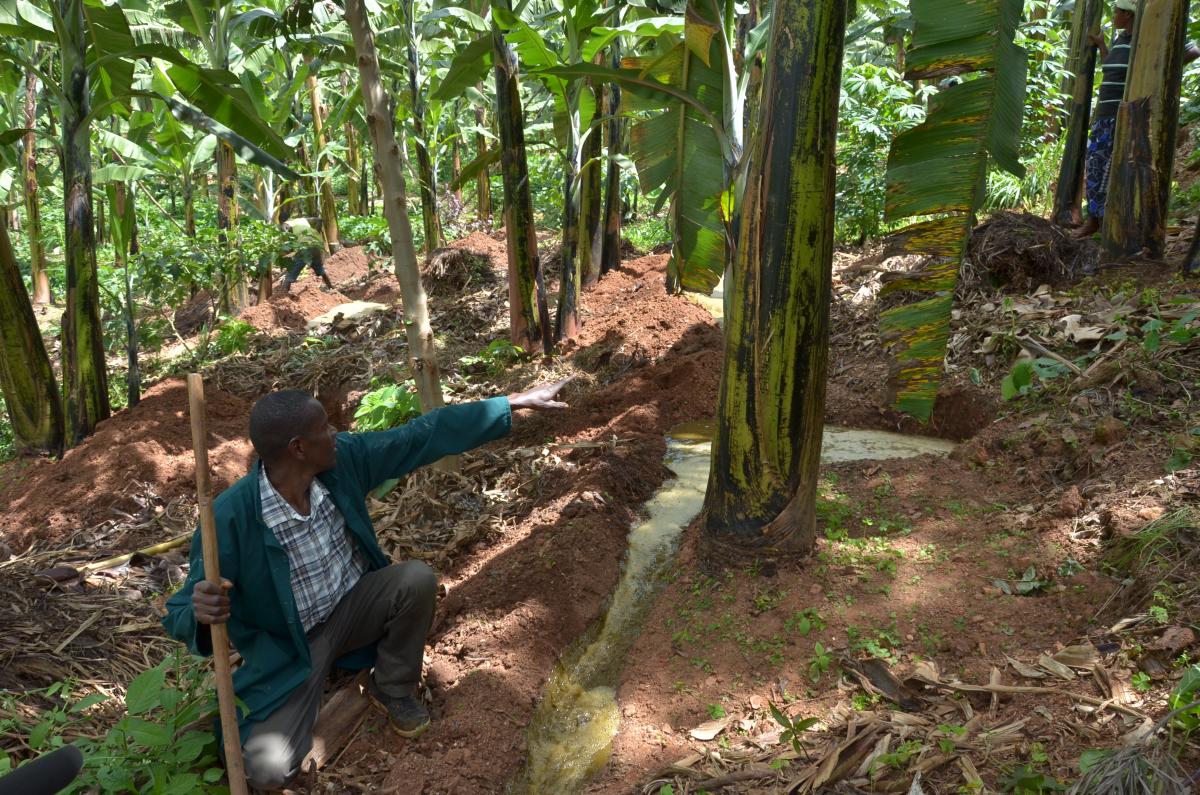Wilberforce Namanya is a farmer in Bushenyi District in Western Uganda. Wilberforce and his family live on a hilly unfertile rocky land. Farming on this piece of land has been difficult for a long time. The Namanyas had always dreamt of becoming commercial farmers but this was thwarted by the nature of the land on where their household is located. This has since changed with the use of bio-slurry (a semi-liquid mixture from a biogas plant that can be used as fertiliser and pesticide). Wilberforce constructed his first 6 cubic meters biogas plant in 2010. With the use of bio-slurry the land has been transformed into a fertile and productive land.
When Wilberforce expanded his banana plantation the bio-slurry was no longer enough to fertilize the expansive banana garden that he had. In 2016, he constructed a second bigger digester of 9 cubic metres to get more bio-slurry.
Wilberforce and his wife Linette use bio-slurry to plant most of their crops: tomatoes, beans, vegetables and coffee.
Due to the land topography, it was difficult to use bio-slurry in the banana plantation. Wilberforce would pay a lot of money to transport the bio-slurry to the banana garden. This was coupled with the high turnover of the workers because of the labour intensiveness of the work to fertilize the garden. Taking advantage of the topography of his land, he constructed pipes that lead the bio-slurry to the banana plantation on its own. This has saved him labour costs in addition to making the work less burdensome.
Linette, his wife says she is able to grow enough vegetables for home consumption and for sale. The income from the harvest is used to finance the purchase of basic commodities such as salt and sugar. On the other hand, the proceeds from the bananas and coffee are used to pay school fees for their children and enable several investments.
Previously, Wilberforce would sell his Matooke (Uganda’s staple food made from banana) at UGX 10,000 (equivalent to 3 USD) per bunch. With the use of bio-slurry, Wilberforce’s yield has increased to three fold in both numbers and size. The Matooke now goes for UGX 30,000 (equivalent to 8 USD). On average Wilberforce harvests over 100 bunches of Matooke during the peak season. Ina good year he is able to make between UGX6, 000,000- 9,000,000 (equivalent to 2500 USD). This is in addition to the proceeds from coffee and other crops. At the moment he is one of the biggest coffee and Matooke farmers in Bushenyi district and he attributes this to the use of bio-slurry.
Since the inception of the Africa Biogas Partnership Programme in Uganda, farmers like Wilberforce have benefited from the use of bio-slurry to transform once barren land to become fertile and productive. Similar Matooke farmers continue to be biogas ‘’ambassadors’’ in their own communities paving way for new approaches to climate change mitigation using biogas.
This story was originally written by the National Implementing Agency of Biogas in Uganda: Biogas Solutions Limited.





